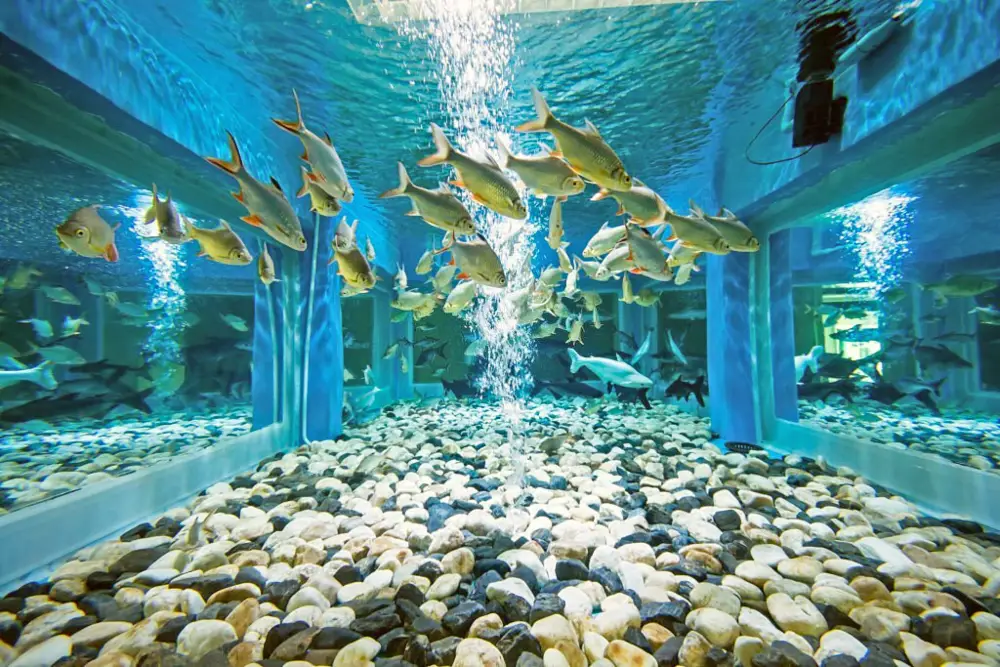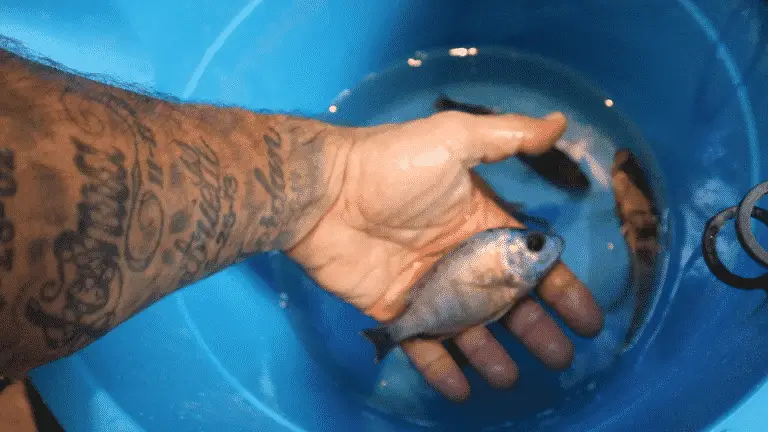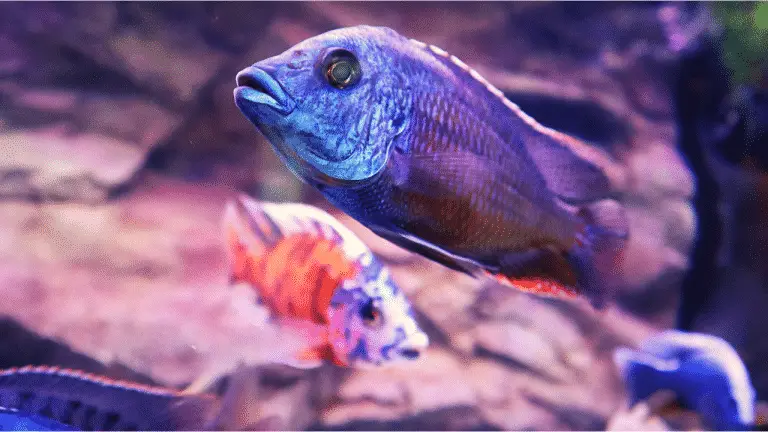Beneficial Bacteria 101 — A Comprehensive Guide
If you’re an aquarium enthusiast, you’ve likely heard about the mysterious world of beneficial bacteria. These tiny, unseen heroes play a pivotal role in the success of your underwater ecosystem. From water clarity to fish health, beneficial bacteria are the unsung champions of your aquarium.
In this comprehensive guide, we’ll dive deep into the microbial realm and demystify the crucial role that these bacteria play in keeping your aquatic world thriving. Join us as we explore the significance of these microscopic allies and learn how to harness their power for a healthy and vibrant aquarium.
The Basics of Beneficial Bacteria

Beneficial bacteria, as the name suggests, are tiny microorganisms that take residence within your aquarium. While they’re invisible to the naked eye, their role is tremendous. These bacteria belong to the groups of nitrifying and denitrifying bacteria, and they primarily aid in the breakdown of organic waste and harmful chemicals in your tank.
So, what do beneficial bacteria actually do? Well, they play a fundamental role in maintaining water quality by participating in what’s known as the nitrogen cycle. In this intricate process, these bacteria help convert toxic ammonia produced by fish waste and decaying matter into less harmful substances, ultimately ending as nitrate. This cycle is crucial for the removal of harmful compounds, ensuring that your fish can breathe and thrive in clean water.
Without these little allies, waste and ammonia would accumulate rapidly, putting your fish at risk of ammonia poisoning and other health issues. To maintain a healthy and thriving aquatic environment, understanding how to nurture and leverage the power of these bacteria is paramount.
The Relationship Between Beneficial Bacteria and Water Quality
Beneficial bacteria, through the nitrogen cycle, play a pivotal role in maintaining pristine water conditions. This cycle begins with the conversion of toxic ammonia, produced by fish waste and decaying matter, into nitrite. Nitrite is then further processed into the less harmful nitrate. By breaking down these harmful compounds, beneficial bacteria ensure that your fish can swim in a clean, ammonia-free, and nitrite-free environment.
To ensure your aquarium’s water quality remains optimal, you’ll need to foster a healthy population of beneficial bacteria. This can be achieved through methods like properly cycling your tank, using quality filtration systems, and avoiding overfeeding your fish. Maintaining stable water parameters, such as temperature and pH, also supports the well-being of these tiny microorganisms.
Water testing is a vital tool in your fish-keeping toolkit. Regular testing allows you to assess the health of your beneficial bacterial colony and catch any water quality issues before they escalate. By monitoring parameters such as ammonia, nitrite, nitrate, and pH, you can make informed adjustments to your aquarium’s environment to ensure the continued well-being of both your fish and the beneficial bacteria that sustain them.
Beneficial Bacteria and Fish Health
Just as humans rely on a healthy gut microbiome for good health, fish depend on a balanced microbial community within their aquatic world. Beneficial bacteria establish a robust microbiome within your aquarium, supporting fish health in numerous ways. These microscopic allies ensure that the water remains free of toxic substances, creating a stable and safe environment for your aquatic friends.
One of the remarkable qualities of beneficial bacteria is their ability to prevent diseases and alleviate stress for your fish. By converting toxic ammonia and nitrite into less harmful nitrate, they reduce the potential for ammonia poisoning and other health issues. With lower stress levels, your fish are more resilient, exhibit vibrant colors, and enjoy a better quality of life.
Fish, like any other living beings, thrive in a stable environment. Fluctuating water parameters and poor water quality can stress your fish, making them more susceptible to diseases. Beneficial bacteria play a crucial role in maintaining the stability of your aquarium’s ecosystem. By ensuring the consistent conversion of harmful compounds, they create an environment where your fish can flourish.
In this symbiotic relationship between fish and beneficial bacteria, the microorganisms serve as the guardians of your aquarium’s health. Their role in disease prevention, stress reduction, and overall fish well-being cannot be understated.
Beneficial Bacteria in Different Types of Aquariums

The world of aquariums can be broadly categorized into freshwater and saltwater ecosystems, each with its unique characteristics. Beneficial bacteria adapt to the distinct demands of these environments.
In freshwater tanks, they primarily convert ammonia into nitrate, maintaining a stable nitrogen cycle. In saltwater or marine tanks, the microbial ecosystem faces the added challenge of maintaining stable salinity levels, alongside nitrogen compound conversion. Understanding these differences is key to ensuring a thriving microbial colony.
Specialized tanks, such as planted, reef, or breeding tanks, come with their own set of requirements. In planted tanks, beneficial bacteria collaborate with aquatic plants to balance the nitrogen cycle. Reef tanks depend on the delicate balance of nitrifying and denitrifying bacteria to manage the complex nutrient dynamics in a coral reef environment. Breeding tanks rely on stable microbial communities to support the development of fry and juveniles. Recognizing the unique needs of these specialized setups is essential for achieving success in your fish-keeping endeavors.
The adaptability of beneficial bacteria to the diverse demands of various aquarium types is a testament to their importance in creating and maintaining a thriving aquatic ecosystem.
Maintaining a Thriving Beneficial Bacteria Colony
After establishing a healthy colony of beneficial bacteria in your aquarium, the key to long-term success is consistent maintenance and avoiding common pitfalls. Let’s explore how to ensure the continued well-being of these tiny but crucial microorganisms:
- Regular water testing: Regularly monitor water parameters such as ammonia, nitrite, nitrate, and pH. This helps you stay informed about the health of your microbial colony and the overall aquarium environment.
- Steady water conditions: Maintain stable water conditions by avoiding sudden changes in temperature, pH, or salinity. Stability ensures that the beneficial bacteria continue their vital functions without disruption.
- Adequate filtration: Ensure that your aquarium filtration system is properly sized and well-maintained. Adequate filtration helps maintain water quality and provides a suitable habitat for beneficial bacteria to thrive.
Avoid the following common pitfalls and disruptions:
- Overcleaning: While regular maintenance is essential, excessive cleaning can disrupt the microbial colony. Avoid deep cleaning of substrates, filter media, and decorations too frequently.
- Antibiotics and chemical treatments: Be cautious when using antibiotics or certain chemical treatments. These can harm beneficial bacteria. Use them only when necessary and with care.
- Unconditioned water: Chlorinated tap water can kill beneficial bacteria. Use a water conditioner — like Seachem Prime or Stability — to remove chlorine before adding new water to the aquarium.
When making changes to your aquarium, such as adding new fish, altering the setup, or conducting maintenance, consider the following:
- Quarantine new fish: Before introducing new fish to your established aquarium, quarantine them in a separate tank. This prevents the introduction of harmful pathogens and helps protect your beneficial bacteria.
- Preserve filter media: When changing filter media, keep a portion of the old media alongside the new. This ensures that beneficial bacteria are not entirely removed and can gradually colonize the new media.
- Gradual changes: If you need to make significant changes to the aquarium, such as rearranging decorations, do so gradually. Sudden changes can stress the microbial colony.
By following these maintenance tips and avoiding common disruptions, you’ll maintain a thriving beneficial bacteria colony in your aquarium.
Cultivating a Thriving Microbial Oasis With KaveMan Aquatics

In the depths of your aquarium, beneficial bacteria work silently, ensuring water quality and fish health. Throughout this guide, we’ve explored their vital role in your aquatic ecosystem. Apply this knowledge to create a thriving environment for your fish.
For personalized guidance, consider KaveMan Aquatics’ 1-on-1 coaching. Your aquarium reflects your dedication to aquatic life. With beneficial bacteria as allies, it’s a testament to your commitment.
-
Beneficial Bacteria 101 — A Comprehensive Guide
Discover the power of beneficial bacteria in aquariums with our comprehensive guide. Enhance fish health and water quality.







